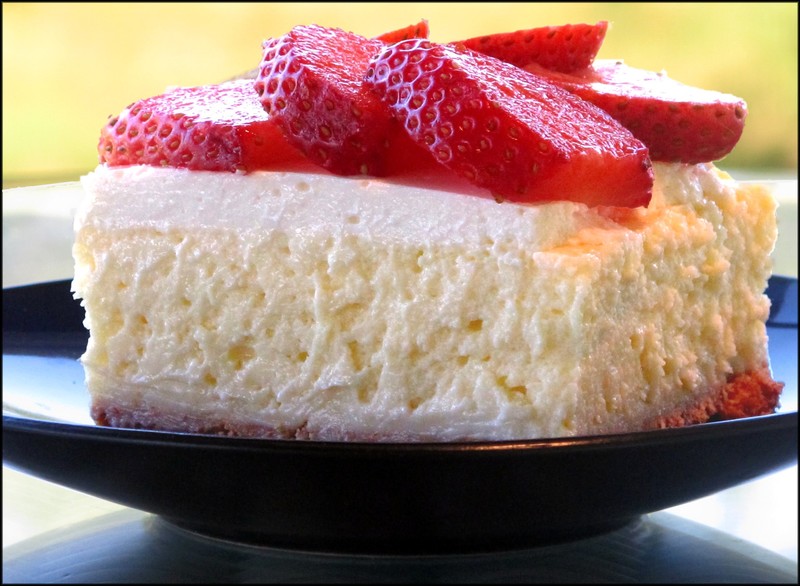What exactly is sour cream? For one answer, we can look to the United States Department of Agriculture, which publishes a five-page monograph on the topic. Specific guidelines include the fat content, flavor profile and texture for the finished product as well as insisting on the use of pasteurized ingredients. The paper also refers to the set of federal regulations known as Standards of Identity (see sidebar).
|
EXAMPLES OF USDA |
||||
These standards exist for many staple foods and were designed to ensure truth in labeling and prevent the use of imitation or non-standard ingredients. Sour cream and yogurt are considered cultured dairy products, which means they have been treated with bacteria to alter their composition. Of course these organisms are not the disease-related bacteria that cause illness, but those considered “good bacteria.”
The science behind the transformation of milk or cream into yogurt or sour cream is quite basic. Bacteria feed on the lactose, or milk sugar, and produce lactic acid. This increases the acidity of the liquid and causes it to "sour" i.e., to coagulate and form solids.
To complicate matters further, you’ll also find specific standards for the type of bacteria. Yogurt requires thermophilic (grows best in a warm environment) bacteria, such as lactobacilli that require temperatures between 100 and 113 degrees to create the tart flavor characteristic of yogurt. The slightly more mild degree of tartness in sour cream is a result of the activity from mesophilic bacteria, which thrive in milder temperatures, between 75 and 85 degrees.
The varying percentages of butterfat in the finished products are determined by the amount of fat in the milk or cream selected as the main ingredient. You can find non-fat, low-fat and full-fat versions of both yogurt and sour cream, which reflects the use of different types of milk (from skim to whole) and light or heavy cream.
In the case of sour cream, there are a few caveats about substituting the non-fat or light varieties when your recipes call for sour cream. First, in order to maintain the expected texture, lower-fat versions will often include thickeners and gums not found in the traditional container of sour cream. The other drawback to lower-fat sour cream is its tendency to separate when cooked, even at a very low heat.
As you can see from the sidebar, sour cream has to have the same minimum fat content as light cream. Imagine how your sour cream would taste if it was made from whipping cream or heavy cream instead. That’s exactly what you’d find if you reached for the cultured cream product known as crème fraiche.
Translated as “fresh cream,” this French specialty has a subtle tang with a nutty hint and an impossibly smooth texture like creamy mousse. It’s found in sweet dessert dishes, often as a topping, and is an essential ingredient in many savory hot sauces, where its fat content (typically 30 percent or more) prevents it from curdling.
Now that you’ve learned more than you may have cared to know about sour cream and its elegant cousin, crème fraiche, what shall we cook? One of the best treats to feature sour cream is the simple cheesecake in the photo, where a baked sour cream topping complements the creamy interior. The pound cake recipe calls for sour cream to enhance both moisture and texture of the tender cake. And, the acidity in sour cream serves as a tenderizer in this recipe for marinated chicken breasts. No matter what the science, sour cream is a tasty ingredient for dishes both sweet and savory.
Sour Cream Cheesecake
graham cracker crust
16 oz softened cream cheese
2/3 C sugar
1 t vanilla
1/2 t lemon zest
2 large eggs
1/2 C sour cream
1 T sugar
1/2 t vanilla
Preheat oven to 300 F. Place the softened cream cheese in a large mixing bowl and beat with an electric mixer until creamy. Add sugar and vanilla and mix well. Add eggs and beat just until combined; do not overmix. Pour batter into crust and bake until center is almost set, about 50 minutes. Remove from oven but leave oven set at 300 F. Whisk together the sour cream, sugar and vanilla. After the cake has been out of the oven for 10 minutes, spread top with sour cream mixture. Return to oven and bake an additional 10 minutes. Cool on a rack until cake reaches room temperature. Cover with plastic wrap and refrigerate for at least 3 hours before cutting.
Sour Cream Pound Cake
1 1/2 C flour
1/8 t baking soda
1/4 t salt
1/2 C softened butter
1 1/4 C sugar
3 eggs
1 t vanilla
1/2 C sour cream
Preheat oven to F. Coat the inside of a loaf pan with nonstick cooking spray; set aside.
Sift the dry ingredients together into a small bowl; set aside. In a large bowl, cream the butter and sugar until light and fluffy. Add the eggs, one at a time, beating well after each addition. Mix in the vanilla. Stir in half the dry ingredients, followed by the sour cream, mixing gently with a spatula to combine. Add the remaining dry ingredients, stirring until incorporated. Pour the batter into prepared pan. Bake until the top is deep golden-brown and a cake tester comes out clean, about 1 hour. Place the pan on a rack to cool for 10 minutes, then remove from pan and allow to cool completely before slicing.
Sour Cream Marinated Chicken
1 lb boneless, skinless chicken breasts
1 T Dijon mustard
1 t lemon juice
1/2 t cracked pepper
1/2 C sour cream
1/4 C Balsamic vinegar
1 t snipped chives
Combine mustard, lemon juice and pepper. Brush chicken breasts with mustard mixture. Whisk together sour cream, vinegar and chives. Pour marinade into a zip-top bag and add chicken. Seal and store in refrigerator for six hours before grilling.





















































